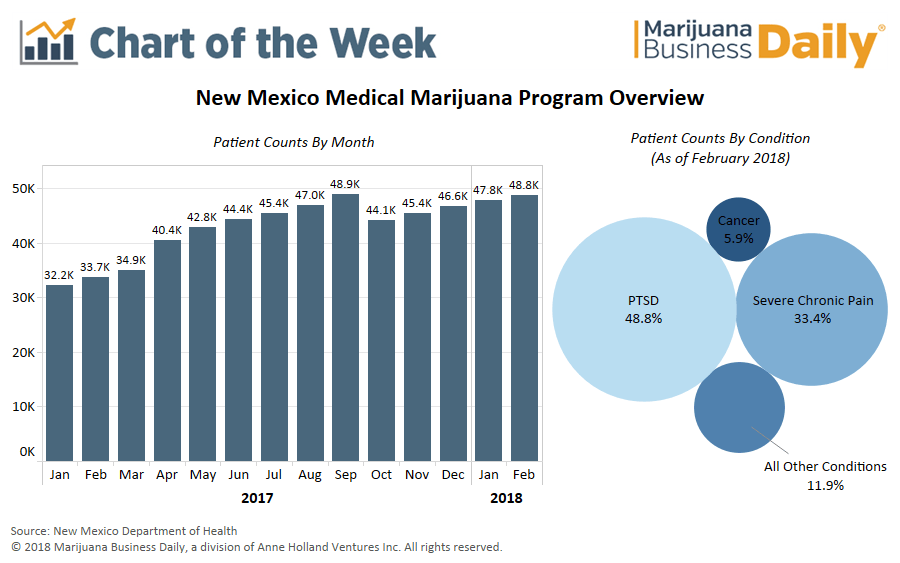New Mexico’s medical marijuana program continues to grow despite a lack of enthusiasm for medical cannabis among top state officials.

Data cleanup performed in October 2017 resulted in a steep reduction in patient counts, though average monthly patient growth for the year clocked in at just over 4%.
Such strong growth is rare for a medical cannabis market as mature as New Mexico’s and comes amid a series of failed attempts to expand the state’s MMJ industry.
New Mexico’s Medical Cannabis Advisory Board has voted twice since November 2016 to broaden the state’s qualifying MMJ condition list, recommending the addition of eight new conditions including anxiety, depression and Alzheimer’s disease.
Health Secretary Lynn Gallagher – who has the final say on which conditions to add or eliminate – turned down all the board’s suggestions.
In April 2017, Gov. Susana Martinez vetoed a bill to add opioid disorder as a qualifying MMJ condition, saying she didn’t want to bypass the Medical Cannabis Advisory Board through a change mandated by legislation.
Recently, however, legislation that would officially ask the state’s health secretary to add opioid use disorder as a qualifying condition unanimously passed the New Mexico House of Representatives. Whether this will prompt any action remains to be seen.
Here’s what you need to know about New Mexico’s MMJ program:
- Nearly half the patients in New Mexico use MMJ to treat post-traumatic stress disorder, likely because it was the first state in the nation to list PTSD as a qualifying condition. New Mexico is the only MMJ state where chronic/severe pain is not the most oft-cited condition treated.
- New Mexico’s medical cannabis businesses – which the state refers to as “licensed nonprofit producers” – are vertically integrated, meaning they grow some or all the MMJ they sell to patients. Only 35 businesses are licensed to grow and sell MMJ in New Mexico, but there are no limits on how many dispensary storefronts each is allowed to open. Currently, there are 71 dispensaries in the state, up from 52 in early 2017. Most companies have one or two dispensaries, though the largest business in the state – Ultra Health – has nine locations.
- Patients purchased approximately 6.8 million grams of MMJ in 2017. Based on the average price per gram in New Mexico – which hovered around $10 throughout the year – the state sold an estimated $60 million worth of MMJ over the course of 2017.
Eli McVey can be reached at [email protected]



